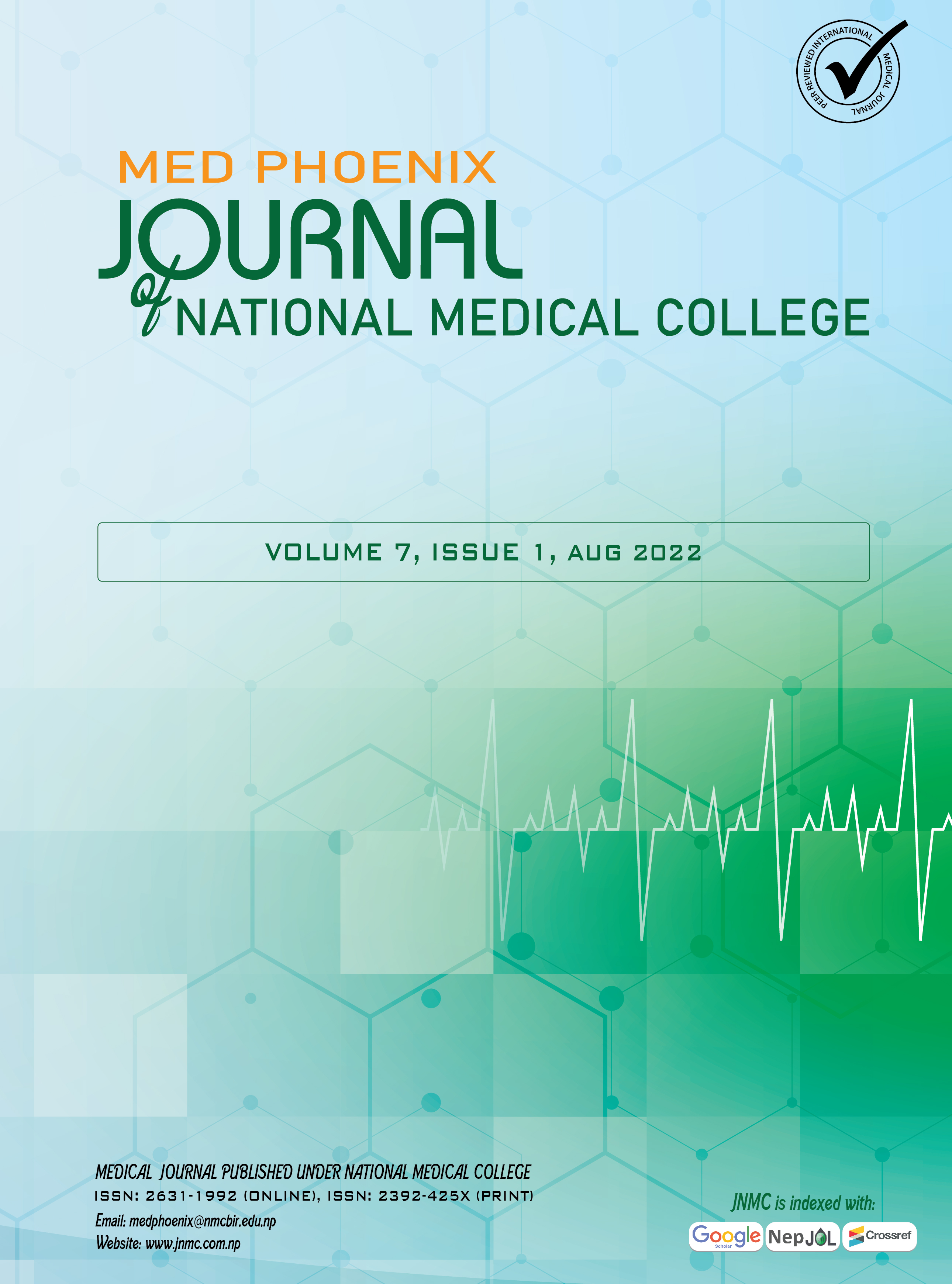Spectrum of Echocardiographic Findings in Patients with Severe and Critical COVID-19: A Single Center Experience
DOI:
https://doi.org/10.3126/medphoenix.v7i1.46919Keywords:
COVID-19, Echocardiography, Left ventricular ejection fraction, Right Ventricle assessmentAbstract
Introduction: Information on the cardiac manifestations of coronavirus disease 2019 (COVID-19) is scarce. In this study we assessed the echocardiogram of consecutive patients with COVID-19 infection to assess the frequency of cardiac abnormalities.
Materials and Methods: This retrospective descriptive study examined the echocardiographic study of 43 patients with severe and critical COVID-19 infection admitted at the ICU of Chitwan Medical College from May 16, 2021 to June 05, 2021. The study focused on left ventricle (LV) and right ventricle (RV) function. The results were then compared between severe and critical infections to examine if any differences exist between them.
Results: The mean age of the study population was 54 years and predominately males. One-third were classified as critical COVID-19 while the remaining were severe COVID-19. Majority(83.7%) had a normal echocardiogram. Among the patients with abnormal reports, the distribution of echocardiographic pattern were biventricular dilation with biventricular dysfunction in two patients (4.6%), LV dialtion with LV dysfunction in two patients (4.6%) and isolated LV dysfunction (diastolic and systolic) in three patients (6.9%). None of the echocardiographic parameters were significantly different between the severe and the critical infection.
Conclusion: COVID-19 in primarily a respiratory disease and the cardiac complications is largely attributed to the critical nature of the illness than the specific infection. Considering the risk of infection spread, routine echocardiography for all patients with COVID-19 infection is not advisable.
Downloads
Downloads
Published
How to Cite
Issue
Section
License
Copyright (c) 2022 Med Phoenix

This work is licensed under a Creative Commons Attribution 4.0 International License.
This license enables reusers to distribute, remix, adapt, and build upon the material in any medium or format, so long as attribution is given to the creator.
Copyright on any research article is transferred in full to MED PHOENIX upon publication. The copyright transfer includes the right to reproduce and distribute the article in any form of reproduction (printing, electronic media or any other form).




